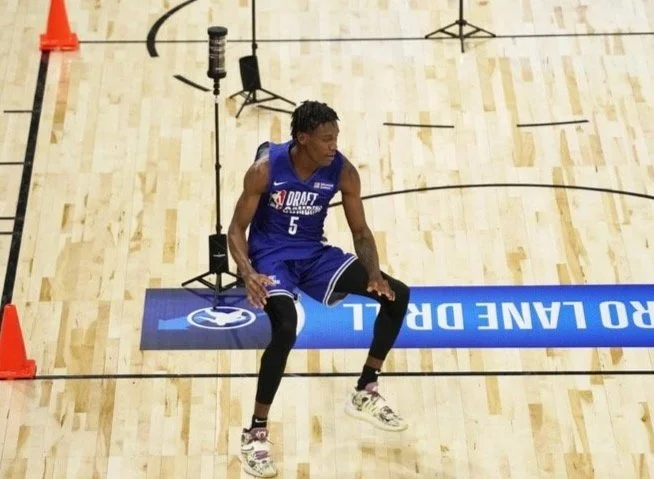Smarter Basketball Training: How SmartGoals Is Transforming Basketball
In modern basketball, success hinges not just on athleticism but on split-second decisions reading a screen, choosing a passing lane, or adjusting to a double team. Today’s NBA demands elite physicality and elite cognitive performance. Enter SmartGoals, a training system originally designed for soccer that is now redefining how basketball players train by integrating reactive agility, decision-making, and data-driven performance tracking.
Image Source: NewYorker.com
How SmartGoals Fits into Basketball
Reactive Agility Drills
Basketball is a game of constant movement and unpredictable changes. Whether defending a fast break or reading a pick-and-roll, players must react instantly. SmartGoals introduces randomized visual stimuli flashing lights that cue specific movements forcing players to adjust direction in real time. This mirrors actual game conditions far more accurately than traditional cone drills.
Reactive agility has been shown to differ significantly from planned agility, especially when perception and decision-making are involved (Young & Willey, 2010). In basketball contexts, such decision-based agility is critical for performance under pressure.
NBA Combine and Scouting
While the NBA Combine tests vertical leap, shuttle runs, and speed, it lacks true cognitive stress. SmartGoals changes that by adding unpredictable visual cues to combine-style drills. This allows scouts to evaluate not just how fast a player moves, but how fast they think.
Elite testing methods should measure both cognitive and physical performance capabilities to match real-game demands (Gabbett & Abernethy, 2012). When athletes are forced to make decisions under fatigue or pressure, it reflects more accurately how they'll perform in game scenarios.
Image Source: NorthWestern University
Position-Specific Training
Point Guards use SmartGoals to enhance reaction time, court vision, and passing under pressure.
Wings benefit from reactive shooting drills that simulate defensive closeouts or shifting matchups.
Bigs improve on help-side decision-making and rotating quickly off the block in response to light-triggered cues.
Position-specific loads and situational cognition are essential for building game-ready players (Serpiello et al., 2017). Each role on the court has distinct perceptual and motor demands, and reactive tech like SmartGoals helps isolate and develop those skills more effectively.
Image Source: BasketballNews
Data-Driven Development
SmartGoals doesn’t just help athletes train it provides real-time performance feedback, allowing coaches to measure:
Reaction time to cues
Accuracy of decisions or movement
Consistency across reps and sessions
This kind of feedback is central to effective performance tracking and injury prevention, as emphasized in athlete monitoring frameworks (Coutts et al., 2018). Long-term monitoring also supports individualized training loads and recovery protocols.
Built on Cognitive and Motor Science
SmartGoals is grounded in three core areas of contemporary sports science:
Cognitive Load Management: Training under both physical and mental stress increases decision-making resilience (Brughelli et al., 2008).
Neuroplasticity: Regularly responding to dynamic stimuli enhances brain-body connection and long-term adaptability (Lezak et al., 2004).
Motor Learning: Varying practice conditions increases retention and execution under pressure (Wulf & Lewthwaite, 2016).
These principles are increasingly adopted by elite sports organizations to close the gap between practice and game performance.
Conclusion
In a league where the difference between elite and average often lies in decision speed, SmartGoals delivers a future-focused training solution. By merging cognitive tasks, movement variability, and performance analytics, SmartGoals helps players develop the tools to excel under pressure.
Whether you're developing prospects, preparing for the NBA Combine, or optimizing your team’s training cycle, SmartGoals brings smarter training to basketball.
Smarter training. Smarter players. Smarter basketball.




